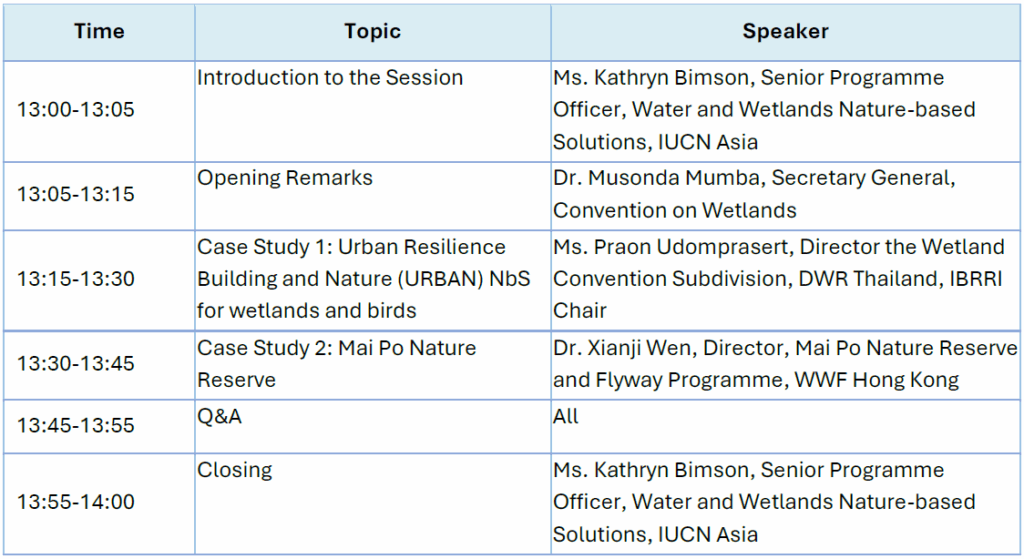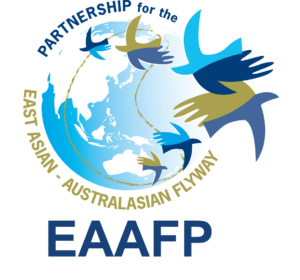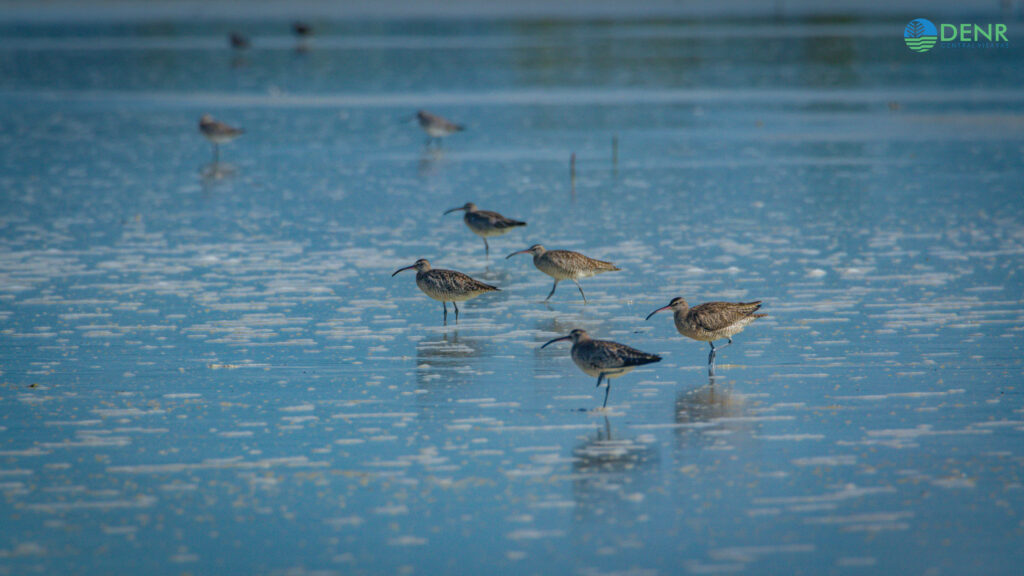Lead Organiser/s Indo-Burma Ramsar Regional Initiative (IBRRI)
Co-organiser/s IBRRI Governments, WWF Hong Kong
Background
Wetlands throughout the East Asian Australasian Flyway are critical stopover points for migratory birds, while also providing essential ecosystem services that support local communities in climate change adaptation. Inland wetlands’ capacity to store water during rainy season and slowly release it throughout the year help to reduce the severity and frequency of droughts and floods. Coastal wetlands also buffer increasingly strong storms and wave action, preventing erosion and reducing the impacts of sea level rise in coastal communities.
However, these ecosystems and their services are extremely vulnerable to climate change: recent Climate Change Vulnerability Assessments conducted by IUCN and partners in wetlands in the region highlighted that changes in rainfall patterns and temperatures, including floods and droughts, are negatively affecting, and will continue to impact wetland ecosystem services, carbon storage, food availability and biodiversity in the region. Already, more frequent and more intense droughts are eroding food security in many wetlands areas.
Facing ever-growing threats from climate change, national governments in the region continue to turn to grey infrastructure, such as dams, embankments and seawalls, to reduce negative impacts on communities, livelihoods and ecosystems. While these solutions provide a ‘quick fix,’ they often only address one issue, and can further degrade other components of an ecosystem.
Nature-based Solutions are defined by IUCN as “actions to protect, sustainably manage, and restore natural and modified ecosystems that address societal challenges effectively and adaptively, simultaneously benefiting people and nature.” Considering the importance of ecosystem services provided by wetlands, Nature-based Solutions for Climate in wetlands can offer an alternative to grey infrastructure, acting as more robust solutions that directly address climate risks and provide a diversity of additional benefits, beyond the main objective for which they were originally developed.
Facing ever-growing threats from climate change, national governments in the region continue to turn to grey infrastructure, such as dams, embankments and seawalls, to reduce negative impacts on communities, livelihoods and ecosystems. While these solutions provide a -quick fix,- they often only address one issue, and can further degrade other components of an ecosystem.
Nature-based Solutions are defined by IUCN as -actions to protect, sustainably manage, and restore natural and modified ecosystems that address societal challenges effectively and adaptively, simultaneously benefiting people and nature.- Considering the importance of ecosystem services provided by wetlands, Nature-based Solutions for Climate in wetlands can offer an alternative to grey infrastructure, acting as more robust solutions that directly address climate risks and provide a diversity of additional benefits, beyond the main objective for which they were originally developed.
Despite this potential for wetlands to act as key green infrastructure, they have been historically undervalued. There is a need to build on NbS pilot studies from the Flyway, and learn from them, scaling them up to multiply their benefits. Building a multi-dimensional framework for implementing NbS in wetlands at the technical, governance, economic and policy levels will facilitate this uptake.
Objective
This side event will introduce Nature-based Solutions and their potential applications in wetlands, highlighting examples from the EAAF. Case studies will demonstrate how Nature-based approaches provide benefits to both local communities and biodiversity, acting as a win-win solution, which is often more cost effective than traditional grey infrastructure approaches.
Expected Outcome
Increased understanding of the potential for wetlands to act as NbS for climate adaptation and mitigation.
Programme


